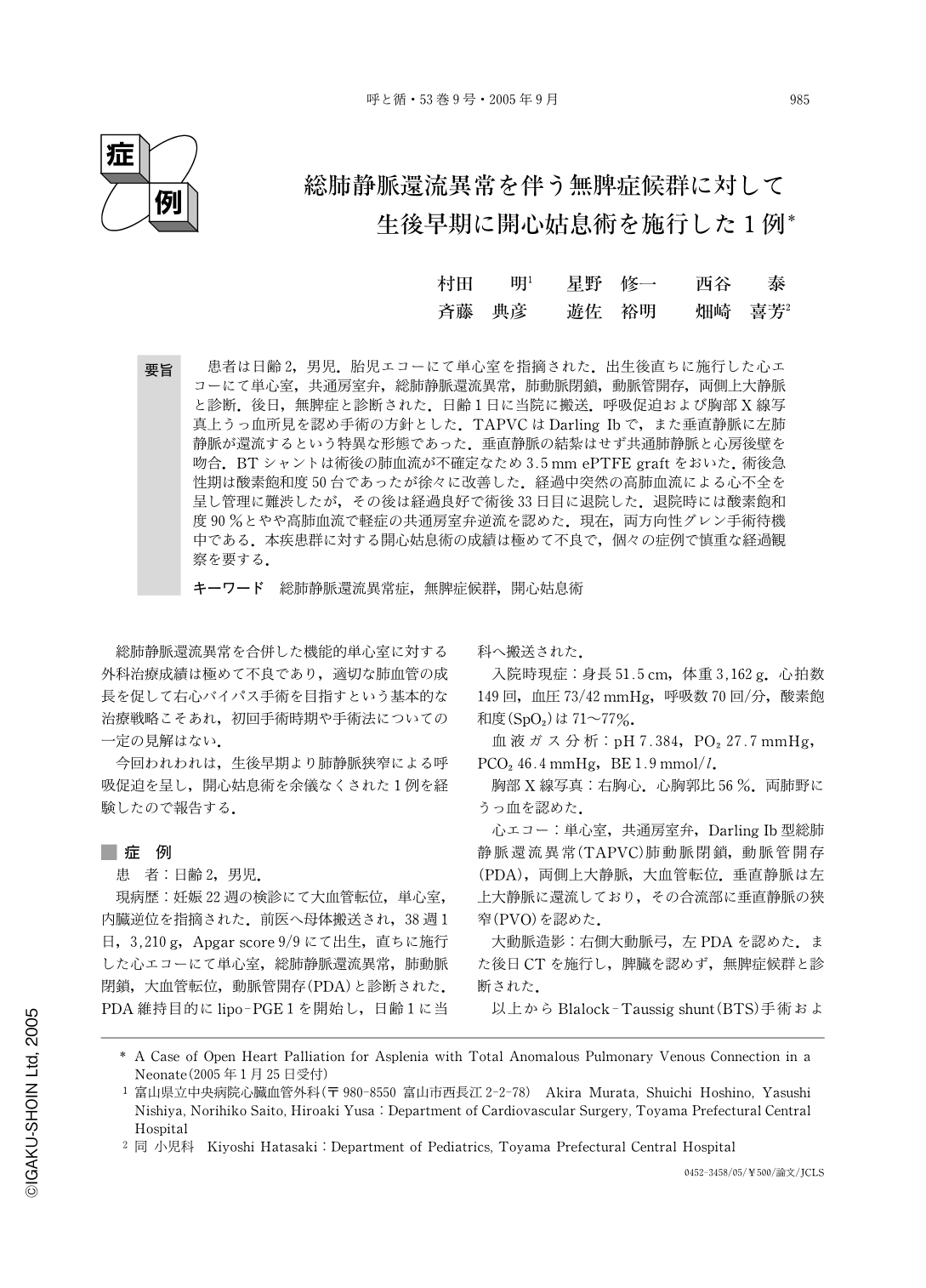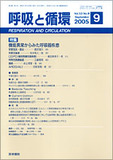Japanese
English
- 有料閲覧
- Abstract 文献概要
- 1ページ目 Look Inside
要旨 患者は日齢2,男児.胎児エコーにて単心室を指摘された.出生後直ちに施行した心エコーにて単心室,共通房室弁,総肺静脈還流異常,肺動脈閉鎖,動脈管開存,両側上大静脈と診断.後日,無脾症と診断された.日齢1日に当院に搬送.呼吸促迫および胸部X線写真上うっ血所見を認め手術の方針とした.TAPVCはDarling Ibで,また垂直静脈に左肺静脈が還流するという特異な形態であった.垂直静脈の結紮はせず共通肺静脈と心房後壁を吻合.BTシャントは術後の肺血流が不確定なため3.5mm ePTFE graftをおいた.術後急性期は酸素飽和度50台であったが徐々に改善した.経過中突然の高肺血流による心不全を呈し管理に難渋したが,その後は経過良好で術後33日目に退院した.退院時には酸素飽和度90%とやや高肺血流で軽症の共通房室弁逆流を認めた.現在,両方向性グレン手術待機中である.本疾患群に対する開心姑息術の成績は極めて不良で,個々の症例で慎重な経過観察を要する.
Summary
We report a palliative operation and treatment in a neonate for asplenia with single ventricle and total anomalous pulmonary venous connection(TAPVC). The baby showed cyanosis and progressive tachypnea soon after birth. Roentogenography on admission revealed pulmonary congestion. Echocardiography showed that the TAPVC was of the supracardiac type(Darling Ib) and that two of the left pulmonary veins were draining into the vertical vein. At 2 days of age, the infant underwent palliative surgery(TAPVC repair and Blalock-Taussig shunt(BTS) with an ePTFE graft of 3.5mm in diameter). Postoperative oxygen saturation(SpO2) was 45~55% but it gradually improved. On the sixth postoperative day, critical heart failure due to excessive pulmonary blood flow occurred, but the patient managed to tolerate this severe condition and was finally discharged when SpO2 was over 90%, a factor that meant pulmonary blood flow was slightly excessive. It is very difficult to control pulmonary blood flow after open palliative surgery in a neonate, and congestive heart failure due to high pulmonary blood flow after such a palliative operation may be so critical that an appropriate graft should be chosen for BTS.

Copyright © 2005, Igaku-Shoin Ltd. All rights reserved.


